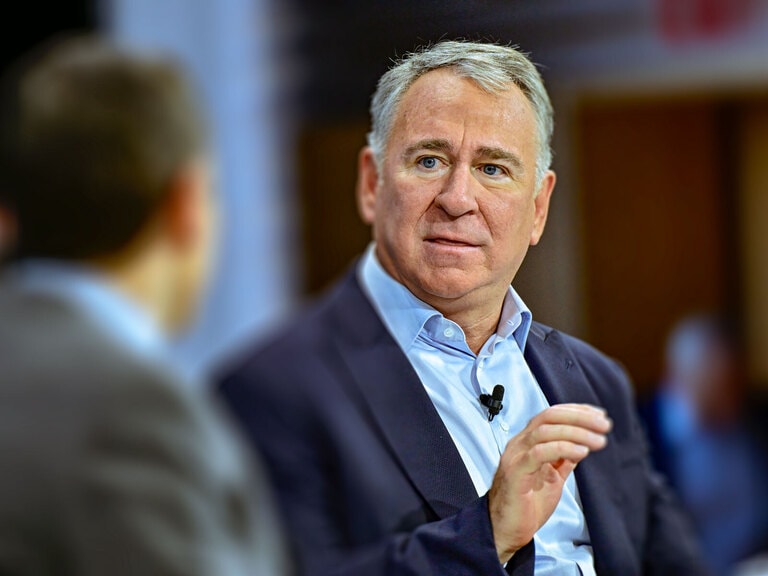The Energy Select Sector SPDR Fund [XLE] has looked a lot slicker in recent weeks, with its share price buoyed by rampant oil price hikes.
Oil stocks and the XLE will continue to keep flowing higher in the months to come according to Bank of America Global Research, Reuters reports. The brokerage said a cold winter could spur more demand, meaning the bank could bring forward its $100 per barrel oil price target to the next six months from mid-2022.
“We project modest deficits over the coming months that should support oil prices into year-end and beyond," the bank said in a note. "Downside risks include a new COVID-19 wave, taper tantrum, a China debt crisis, and the return of Iranian crude barrels. Having said all of that, winter weather risk is quickly becoming the most important driver of energy markets.”
The Energy Select Sector SPDR fund seeks to provide exposure to companies in the oil, gas and consumable fuel, energy equipment and services industries. It started the year at $38.34 on 4 January before rising to $53.57 at the close on 12 March. It dropped again to $45.79 at the close on 19 August before climbing to $52.09 at the close on 30 September.
According to Yahoo Finance, the Energy Select Sector SPDR Fund’s year-to-date total daily return is 32.91% and has total net assets of $25.55bn. The latest run has come off the back of a supply and demand imbalance in the oil sector as economies crank up post-pandemic.
“Downside risks include a new COVID-19 wave, taper tantrum, a China debt crisis, and the return of Iranian crude barrels. Having said all of that, winter weather risk is quickly becoming the most important driver of energy markets” - Bank of America Global Research
This has led to rising prices, with Brent crude climbing to over $80 per barrel in early trading on 28 September for the first time since 2018. It now sits at around $78.
Rising oil prices
Goldman Sachs forecasts that Brent will hit $90, up from previous expectations of $80, by the end of the year as demand continues to climb.
Supply will remain constrained according to AJ Bell. The equities researcher said, OPEC and its allies “seem keen to increase its output only very gradually”. The planned increase of 400,000 barrels a day per month from OPEC will add about two million barrels or 2% of global supply.
Zacks stock strategist, Tracey Ryniec, is even talking up an oil bull market.
“While bull markets end with a bang, bear markets end with no fanfare at all. Such is the case with the oil stocks in 2021, even though it was the best performing S&P 500 sector in the first six months of the year, investors have stayed out of the stocks” - Zacks stock strategist, Tracey Ryniec
“Energy has been the most hated sector for several years but after oil plunged, and actually went negative, in the coronavirus sell-off last year, many investors gave up on the sector,” she said. “Over the last five years, the XLE is down 27% even as the S&P 500 has rallied 100% and the NASDAQ has soared 175%. While bull markets end with a bang, bear markets end with no fanfare at all. Such is the case with the oil stocks in 2021, even though it was the best performing S&P 500 sector in the first six months of the year, investors have stayed out of the stocks.”
Major long-term questions still hang over big oil and the race to net-zero, but in the short-term as industry transitions unsteadily to a clean energy future, there is still plenty of liquid to be found in the world of oil.
The ebb and flow of oil
“A persistent supply deficit is leading to an ever-tighter oil market, with Organisation for Economic Co-operation & Development (OECD) inventories likely to end the year at the lowest level of demand cover in decades,” analysts at Barclays said as reported by CNBC.
It’s a far cry from 2020, when the pandemic reduced the need for oil as aeroplanes were grounded, factories were shut, and cars stayed in drives as people worked from home.
As a result, according to CNBC, the major oil producing nations such as Saudi Arabia cut around 10 million barrels of the black stuff per day from the market.
“A persistent supply deficit is leading to an ever-tighter oil market, with Organisation for Economic Co-operation & Development (OECD) inventories likely to end the year at the lowest level of demand cover in decades” - Barclays analysts
Supply remains constrained, exacerbated by supply chain squeezes, lack of infrastructure maintenance and under-investment in recent years as the industry and business look for cleaner energy options. The impact of Hurricane Ida in the Gulf of Mexico has also battered oil production.
Broker AJ Bell says as the US economy has emerged from lockdown and started to grow, “demand for energy has gone up and demand for gasoline for cars and trucks in particular. As a result, America’s stockpile of oil has shrunk down to just under 424 million barrels, excluding the strategic reserve.”
The performance of oil and gas ETFs
This compares with the ProShares Ultra Bloomberg Crude Oil ETF [UCO] which has, according to Yahoo Finance, a year-to-date total daily return of 96.47% and total net assets of $1.3bn.
The XLE, launched in December 1998, has 23 holdings with Exxon Mobil [XOM] having the biggest weighting at 22.89%, Chevron [CVX] with 20.68%, ConocoPhillips [COP] with 4.73% and Marathon Petroleum Corp [MPC] with 4.57%.
Exxon Mobil’s shares have soared from $41.50 at the close on 4 January to $58.82 at the close on 30 September. Chevron’s shares have climbed from $85.20 at the close on 29 January to $101.45 at the close on 30 September.
Continue reading for FREE
- Includes free newsletter updates, unsubscribe anytime. Privacy policy





